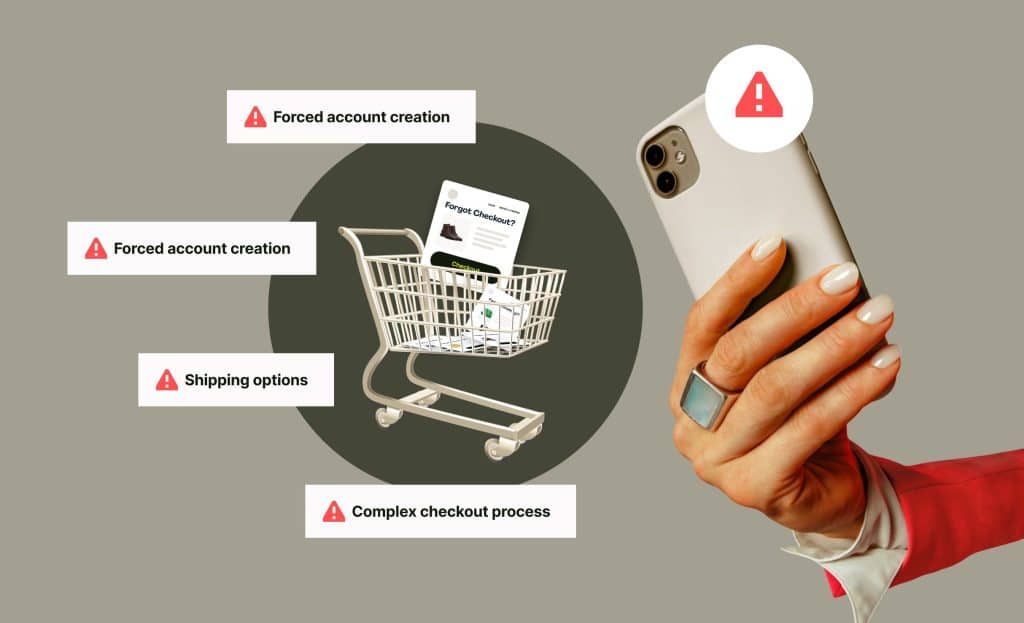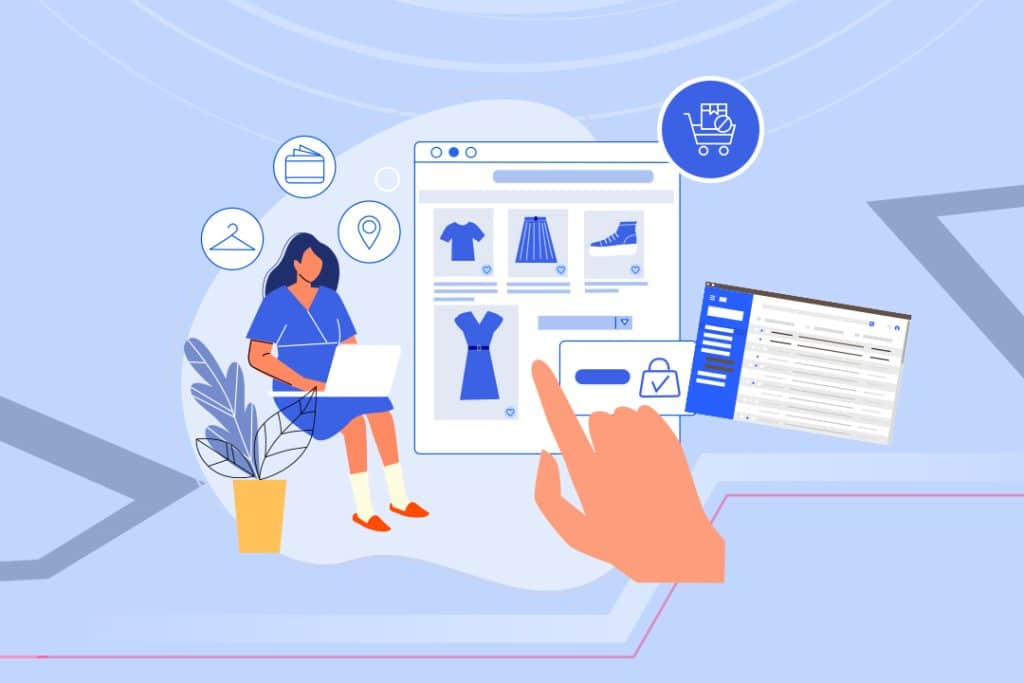Introduction
In the bustling world of online retail, the efficiency and user-friendliness of your ecommerce checkout process can be the defining factor between a completed sale and a lost opportunity. With the rise of digital shopping, customers expect a smooth, hassle-free checkout experience. Unfortunately, cart abandonment remains a significant challenge, with potential customers leaving their purchases unfinished. This blog post explores strategies to enhance your checkout process, aiming to reduce cart abandonment rates and boost sales.
Understanding the Importance of an Optimized Ecommerce Checkout Flow
The checkout process plays in the success of any online retail operation. A well-designed and streamlined checkout flow can significantly impact customer experience, reduce cart abandonment rates, and ultimately drive sales. It emphasizes that a seamless checkout process is not just a convenience but a necessity in the competitive world of ecommerce. By examining factors like the number of steps in the checkout process, the clarity of information, and the ease of navigation, this section educates readers on how an optimized checkout can lead to increased customer satisfaction and loyalty, thereby contributing to the long-term success and growth of an ecommerce business.
The Impact of Checkout Page Design on Customer Decisions
The design of your checkout page plays a crucial role in customer decisions. A cluttered or confusing page can deter potential buyers, leading to increased cart abandonment. Ensure that your checkout page is intuitive, with clear instructions and a straightforward path to completion. Including features like progress indicators can significantly enhance user experience, making the checkout process seem less daunting and more manageable.
Streamlining Information Input
Minimizing the amount of information customers need to input can streamline the checkout process. Consider implementing auto-fill options for returning customers or using smart fields that only request essential information. This reduces the time and effort required to complete a purchase, making the ecommerce checkout ux experience more user-friendly.

Leveraging Technology to Simplify the Checkout Process
In today’s digital age, embracing technology such as AI-driven recommendations, one-click payments, and automated data capture enhances the checkout process, making it faster, more secure, and user-friendly. This approach not only reduces the time and steps required to complete a purchase but also minimizes errors and improves data accuracy. By incorporating features like mobile wallet integration, real-time address verification, and personalized user experiences, online retailers can significantly reduce cart abandonment rates. This adoption of technology not only caters to the evolving expectations of modern consumers but also positions the business as a forward-thinking player in the competitive ecommerce landscape.
The Role of Mobile Optimization in Checkout Efficiency
With a significant portion of online shopping done via mobile devices, optimizing your checkout process for mobile users is crucial. A mobile-friendly checkout page ensures that customers can easily complete their purchases on any device, reducing the likelihood of cart abandonment due to technical issues or poor mobile experience.
Implementing Secure Payment Options
Security is a top concern for online shoppers. Incorporating various secure payment options, including digital wallets and encrypted payment gateways, can instill trust in your customers. This assurance can encourage them to complete their purchases, thus enhancing the overall effectiveness of your checkout flow.
Reducing Cart Abandonment Through Personalization
Tailoring the shopping and checkout experience to individual customer preferences can significantly decrease the rate of cart abandonment in ecommerce. Personalization involves analyzing customer data to offer relevant product recommendations, personalized discounts, and a checkout process that resonates with their unique shopping habits and preferences.
By creating a more engaging and individualized experience, customers are more likely to feel valued and understood, which not only encourages them to complete their current purchase but also fosters long-term loyalty. This approach transforms the often-generic checkout journey into a more intuitive and customer-centric experience, addressing the common pain points that lead to cart abandonment.
Customizing the Checkout Experience Based on User Behavior
Personalizing the checkout experience based on user behavior and preferences can significantly reduce cart abandonment. For instance, offering recommended products or previously viewed items during the checkout process can encourage additional purchases and reinforce the decision to complete the transaction.
Utilizing Cart Abandonment Emails Effectively
Cart abandonment emails are a powerful tool in re-engaging customers who have left their carts. By sending personalized, timely emails that remind customers of their unfinished purchases and offering incentives to return, you can effectively reduce cart abandonment rates.
Enhancing User Experience Through Customer Support and Feedback
This approach involves actively engaging with customers to understand their needs and preferences, thereby offering a more tailored and satisfying shopping experience. By providing effective customer support, such as live chat or responsive help desks, businesses can address customer queries and concerns in real-time, reducing frustration and potential cart abandonment.
Furthermore, soliciting and analyzing customer feedback about the checkout experience offers invaluable insights into what works and what doesn’t. This continuous loop of feedback and improvement not only enhances the usability and efficiency of the checkout process but also builds trust and loyalty among customers, as they feel heard and valued. Ultimately, integrating robust customer support and feedback mechanisms is a strategic move towards creating a more user-friendly and efficient checkout, leading to higher customer satisfaction and increased sales.
Providing Real-time Assistance During Checkout
Offering real-time assistance, such as live chat support, during the checkout process can address customer queries and concerns immediately. This immediate support can make a significant difference in whether a customer completes their purchase or abandons their cart.
Gathering Customer Feedback for Continuous Improvement
Gathering and analyzing customer feedback about your checkout process is invaluable. This feedback can guide you in making data-driven improvements, ensuring that your checkout flow remains optimized and customer-centric.

The Role of Analytics in Refining the Ecommerce Checkout Process
The critical function of data analysis in enhancing the online shopping experience. In the realm of ecommerce, analytics serve as the backbone for understanding customer behaviors and preferences during the checkout process. By meticulously tracking and evaluating data such as cart abandonment rates, average transaction times, and user interactions on the checkout page, businesses can gain invaluable insights.
These insights enable them to identify potential pain points, such as complicated navigation or time-consuming payment procedures, which may deter customers from completing their purchases. Armed with this knowledge, ecommerce platforms can make data-driven decisions to streamline their checkout flow, simplify user interfaces, and tailor the process to meet the specific needs and expectations of their customer base. Consequently, the effective use of analytics not only enhances the user experience but also directly contributes to reducing cart abandonment and increasing conversion rates, thereby driving sales and business growth.
Utilizing Data to Identify and Address Bottlenecks
Analyzing checkout process data helps identify bottlenecks that might be causing cart abandonment. By understanding where customers are dropping off, you can make targeted improvements to those areas of the checkout process.
A/B Testing for Optimal Checkout Page Design
A/B testing different elements of your checkout page can provide insights into what works best for your audience. This method allows you to fine-tune the design and functionality of your checkout process based on actual user responses.
Conclusion
Reducing cart abandonment and optimizing the ecommerce checkout process requires a blend of strategic design, technology utilization, personalization, customer support, and data analysis. By focusing on creating a seamless, user-friendly checkout experience, you can significantly improve customer satisfaction and boost sales. Remember, the key to success in ecommerce lies in continuously evolving and adapting to meet your customers’ needs and preferences.
What is the best ecommerce checkout design?
Simplicity, clear steps, and minimal distractions.
What is the average ecommerce checkout rate?
The average ecommerce checkout rate varies depending on various factors such as industry, website design, user experience, and more.
What is online check out?
The online checkout is the process where customers complete their purchase of products or services on a website. It typically involves entering payment and shipping information and confirming the order.


